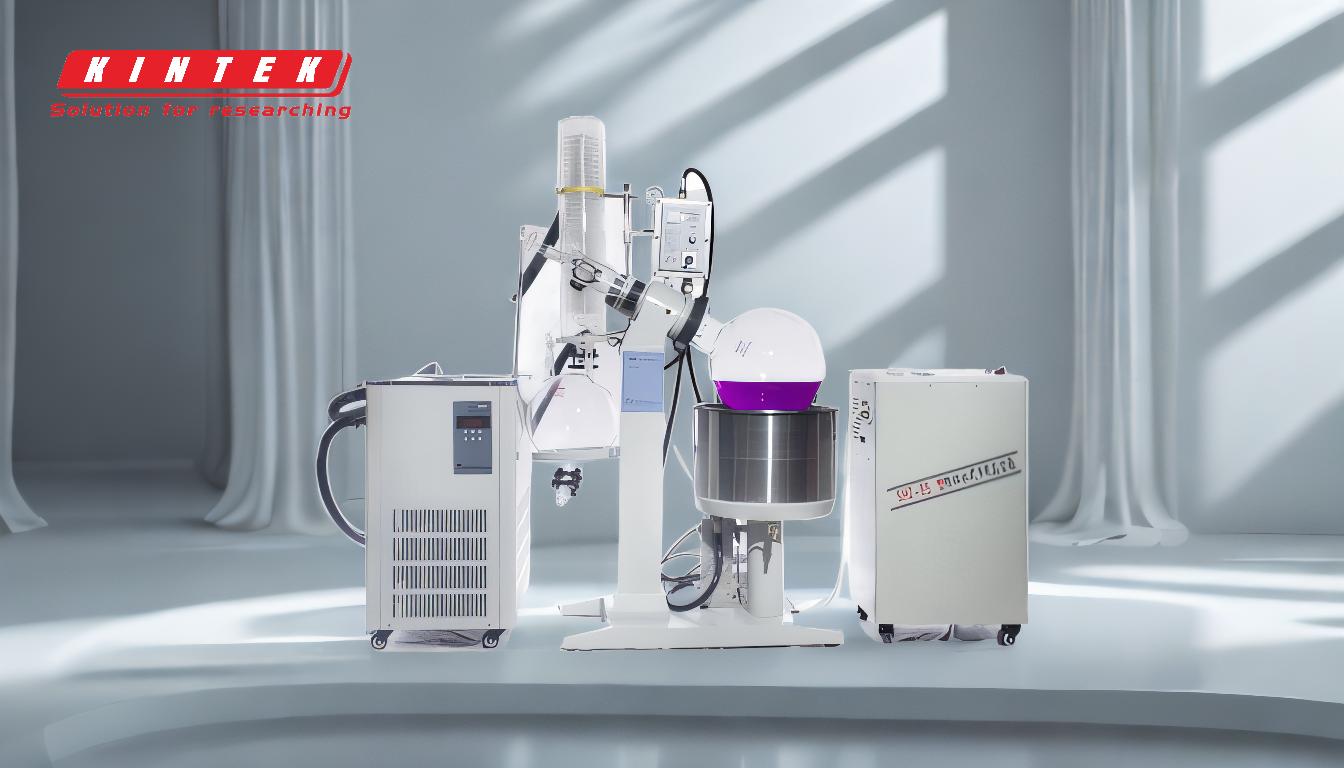Spinning the flask in a rotary evaporator (rotovap) is a critical step in the distillation process, primarily because it enhances the efficiency and safety of evaporation. The rotation increases the surface area of the liquid, which accelerates the evaporation rate by exposing more solvent to the heat source. Additionally, the centrifugal force generated by the spinning motion prevents the liquid from forming large bubbles or "bumping," which can lead to spills or contamination. The rotation also ensures uniform heating and temperature distribution, improving the overall stability and effectiveness of the process. These combined effects make spinning the flask an essential practice in rotovap operations.
Key Points Explained:

-
Increased Surface Area for Evaporation:
- Spinning the flask creates a thin film of liquid on the inner walls of the flask due to centrifugal force. This thin film significantly increases the surface area exposed to the heat source, which accelerates the evaporation process.
- A larger surface area allows more solvent molecules to escape into the vapor phase per unit time, making the distillation process faster and more efficient.
-
Prevention of Bumping:
- Bumping occurs when a large pocket of solvent vapor forms rapidly, displacing the surrounding liquid and potentially causing spills or contamination.
- Moderate spinning prevents the nucleation of large bubbles by keeping the liquid evenly distributed across the flask's inner surface. This reduces the risk of bumping and ensures a smoother evaporation process.
-
Uniform Heating and Temperature Distribution:
- The rotation of the flask ensures that the liquid is evenly exposed to the heat from the water bath. This uniform heating prevents localized overheating, which can lead to thermal degradation of sensitive compounds.
- Consistent temperature distribution also improves the efficiency of the evaporation process, as the entire sample is maintained at an optimal temperature for solvent removal.
-
Improved Heat Transfer:
- Spinning the flask agitates the liquid in the water bath, enhancing heat transfer to the flask and the solvent inside. This ensures that the heat is effectively utilized for evaporation rather than being lost to the surroundings.
- Efficient heat transfer is crucial for maintaining a stable evaporation rate and reducing the overall time required for distillation.
-
Enhanced Mixing of the Sample:
- The rotation of the flask promotes thorough mixing of the sample, ensuring that all parts of the liquid are equally exposed to the heat and vaporization process.
- This mixing is particularly important for samples that may contain multiple components or volatile compounds, as it prevents stratification and ensures consistent evaporation rates.
-
Centrifugal Force and Liquid Distribution:
- The centrifugal force generated by the spinning motion keeps the liquid distributed across the inner walls of the flask, preventing it from pooling at the bottom.
- This distribution not only increases the surface area but also minimizes the risk of localized boiling or uneven evaporation, which can compromise the quality of the distillation.
-
Safety and Efficiency:
- By reducing the risk of bumping and ensuring uniform heating, spinning the flask enhances the safety of the rotovap operation. This is particularly important when working with volatile or hazardous solvents.
- The increased efficiency of the evaporation process also reduces the time and energy required for distillation, making the process more cost-effective and environmentally friendly.
In summary, spinning the flask in a rotovap is essential for maximizing the efficiency, safety, and quality of the distillation process. It increases the surface area for evaporation, prevents bumping, ensures uniform heating, and enhances heat transfer and mixing, all of which contribute to a more effective and reliable operation.
Summary Table:
| Key Benefit | Explanation |
|---|---|
| Increased Surface Area | Spinning creates a thin liquid film, accelerating evaporation by exposing more solvent to heat. |
| Prevention of Bumping | Centrifugal force prevents large bubbles, reducing spills and contamination risks. |
| Uniform Heating | Ensures even temperature distribution, preventing localized overheating. |
| Improved Heat Transfer | Agitation enhances heat transfer, making the process faster and more efficient. |
| Enhanced Mixing | Promotes thorough mixing, ensuring consistent evaporation for all sample parts. |
| Centrifugal Force | Distributes liquid evenly, minimizing risks of localized boiling. |
| Safety and Efficiency | Reduces bumping risks and energy use, making distillation safer and cost-effective. |
Optimize your distillation process with expert guidance—contact us today to learn more!















